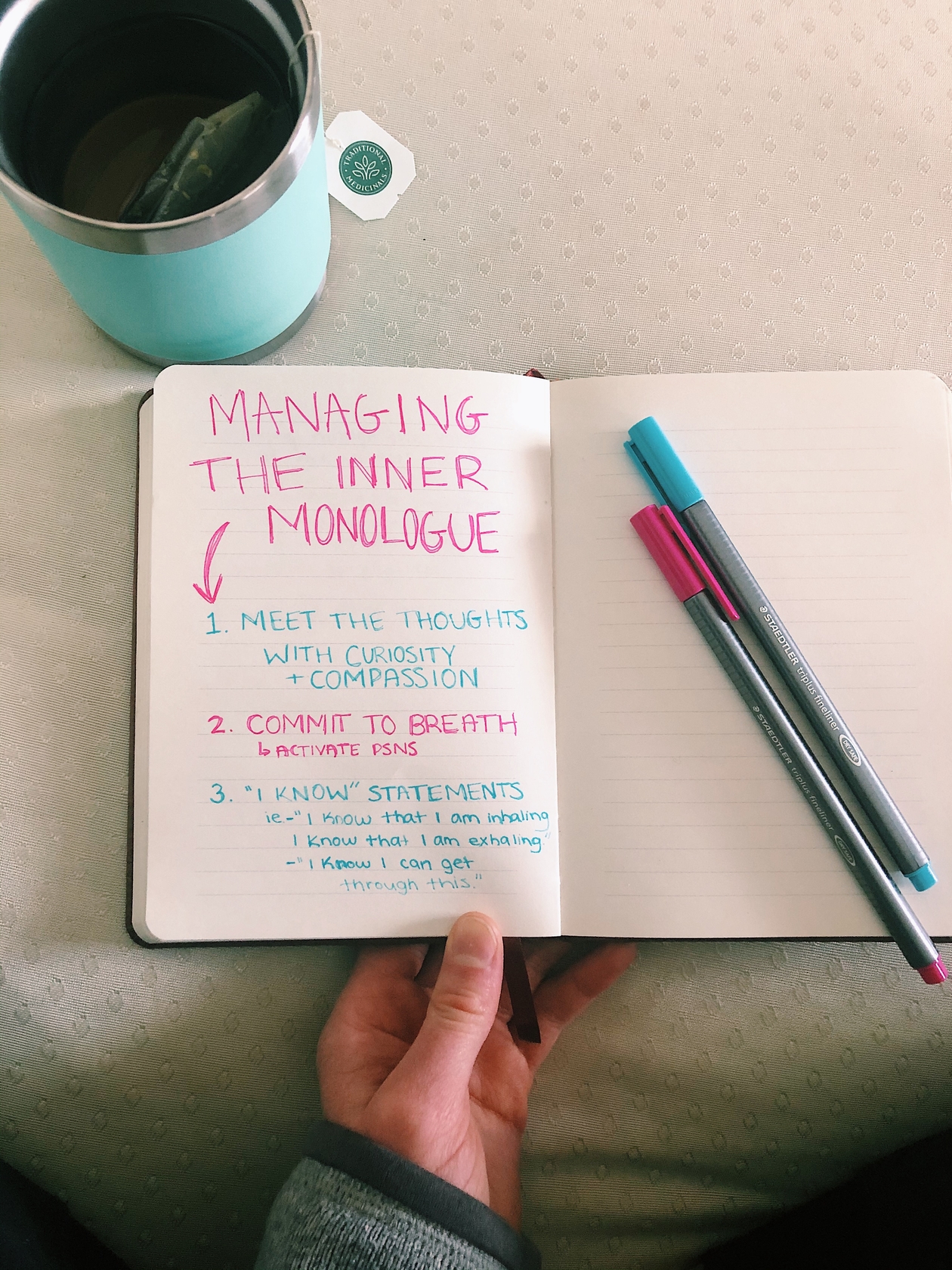The Three Steps To Manage Your Inner Monologue
Published March 03, 2020 by Sheila Anne Murray

I was recently introduced to the current hot topic of inner monologues and I was blown away. Though the study of inner speech started in the 1930s, there has been a recent resurgence of interest in the topic — people have flocked into online discussions to express what they imagined life would be like without their internal narrative.
So what if you do have an inner monologue?
Most of us don’t just have one; our inner monologue is also our inner critic & inner panic button, and it has a sneaky way of taking over our lives. Sure, you can try to envision yourself by a lake with no cares in the world when things get rough. But if your mind is in “panic, self-destruction” mode, you probably know —trying to think like that can make things worse.
What if I told you a more effective way that was also simpler?! In this post, I’ll be sharing three steps to managing your inner monologue.
1. Meet the monologue
Meet the monologue with curiosity & compassion. I mean it! None of this: “why am I panicking? There’s nothing to be worried about! I’m being crazy! No one else would do this!” Trying to beat down your internal monologue with punishment is not going to cut it.
Instead:
Reach for curiosity — “This is an interesting thought process I’m experiencing. Hmmm…”
Reach for compassion — “ I’m listening and meeting these thoughts with love, not judgement.”
Give your worries a little love! You are not having an uncontrollable monologue on purpose! Your concerns, emotions, worries, and thoughts are natural. Accept that they are sending you a message, then commit to reaching for something that will serve you better.
2. Commit to breath
Ok, this part may be the toughest, but it’s vital. By taking deep, slow and steady breaths, we signal our parasympathetic nervous system (PSNS) to calm our body down. Those deep breaths are taking the unconscious reactions of your body and repurposing them. And what will this do for you? The activation of the PSNS prompts the body to reset and return to equilibrium, thereby promoting a clearer mental, physical, and emotional state. Did you know that the magic pill to vitality and clarity was already within your power? Use it!
3. Try “I know” statements
When you feel that panic light go off in your mind/body, make space for thoughts that are clear, concise, and calming. Since you were probably set off by uncertainty, bad news, or self-deprecating thoughts, you meet this panic with statements that are true, simple, and positive.
Here are a few statements that have worked for me and many others:
“I know that I am inhaling. I know that I am exhaling.”
“I know that all will soon be well.”
“I know that I am safe at this moment.”
“I know I can get through this.”
Feel free to come up with your own if you want to be more specific. When you do, make sure that your statements are true & simple. This isn’t about envisioning your goals or manifesting something to happen; this is about resetting your nervous system and stepping away from panic mode… and then later we can get back to manifesting.
Make sure that you do the three steps in order. Ideally, you continue the deep breathing as you make the statements, continuing to promote homeostasis and mental clarity, while decreasing the opportunity to mentally relapse. If you find this helpful or have questions, contact me to let me know!
———————————————————————————————————————
My coaching sessions involve mindfulness and techniques like this. If this resonates with you, I invite you to apply for a 20 minute free call so we can personalize your plan to manage your inner monologue.
